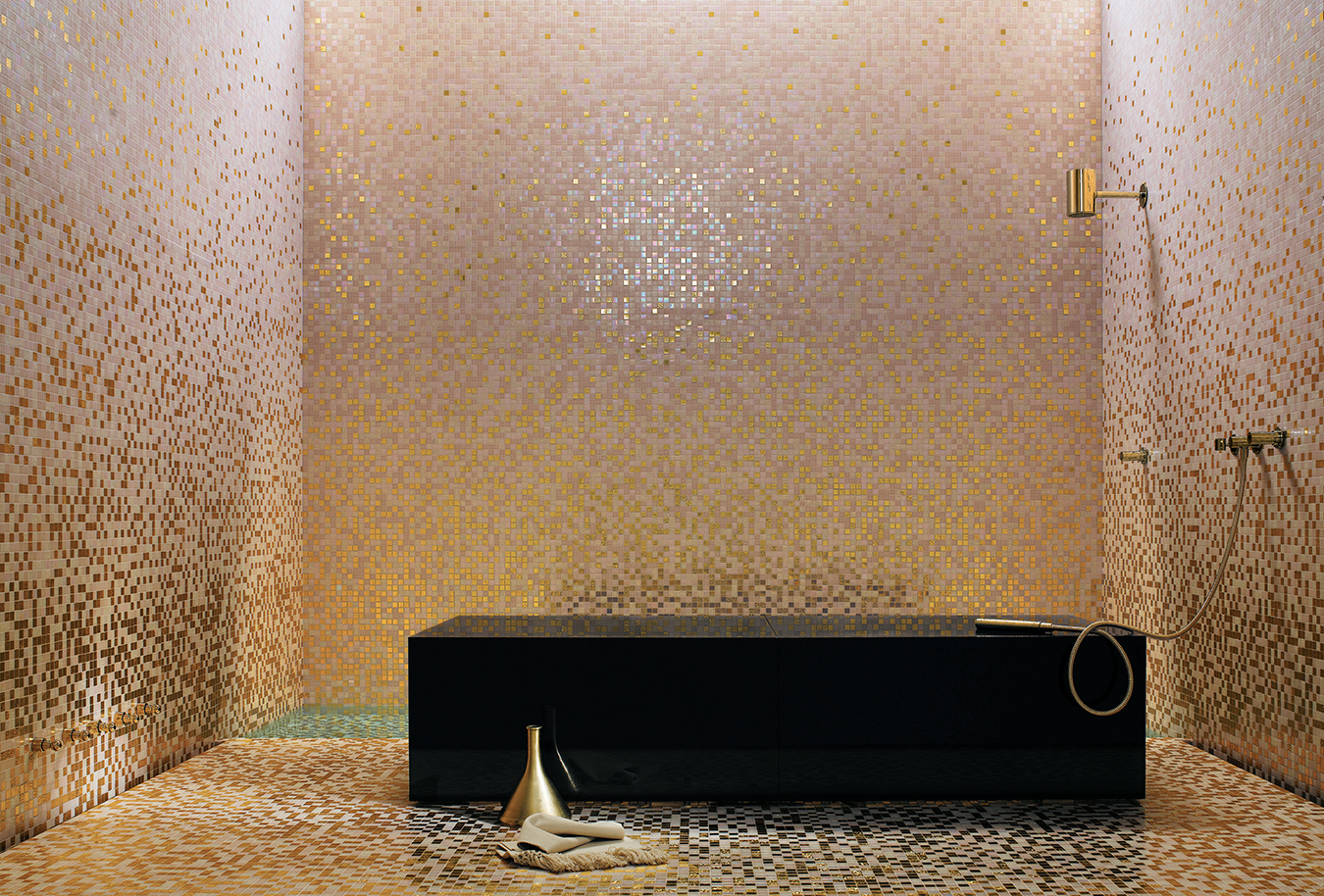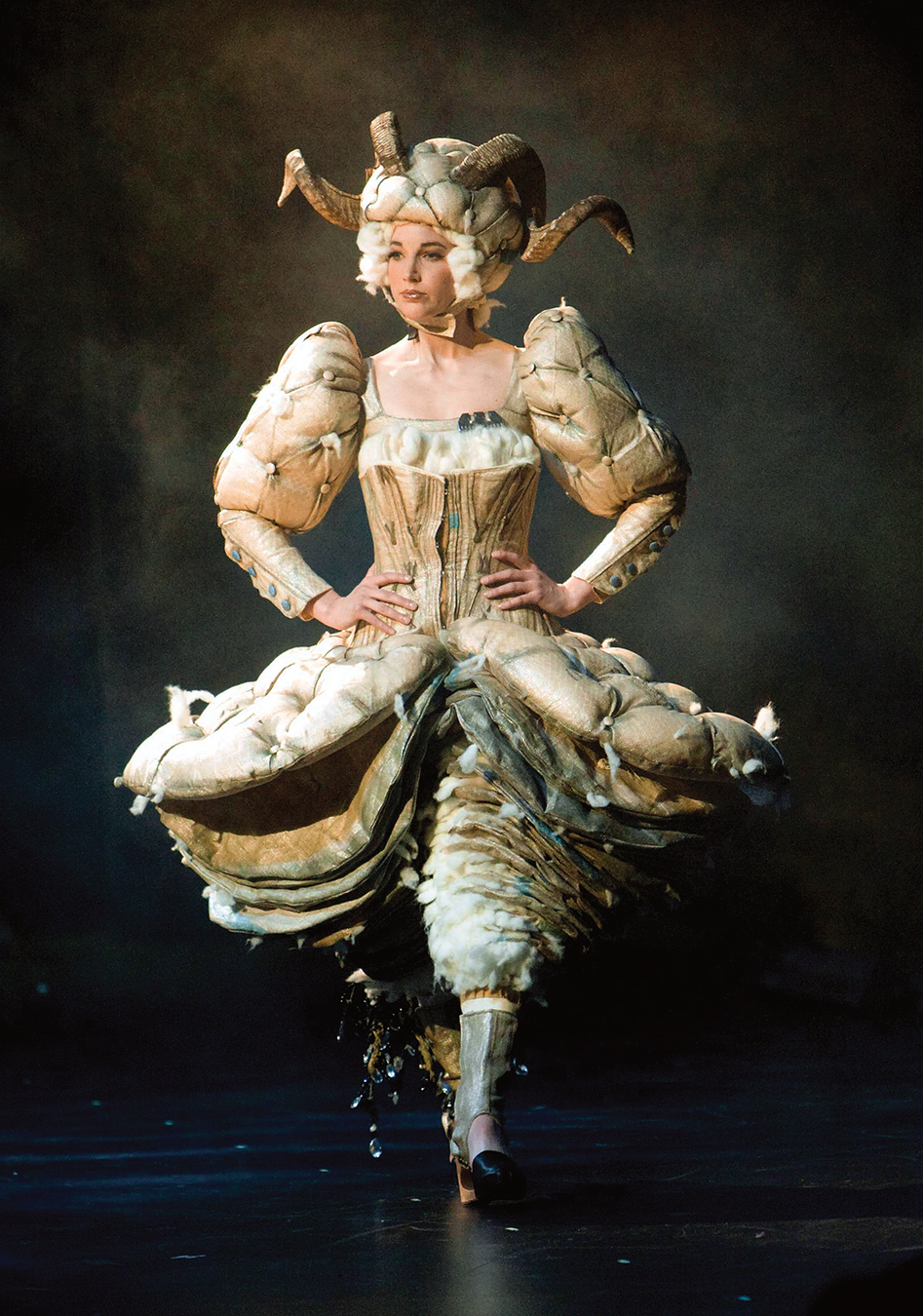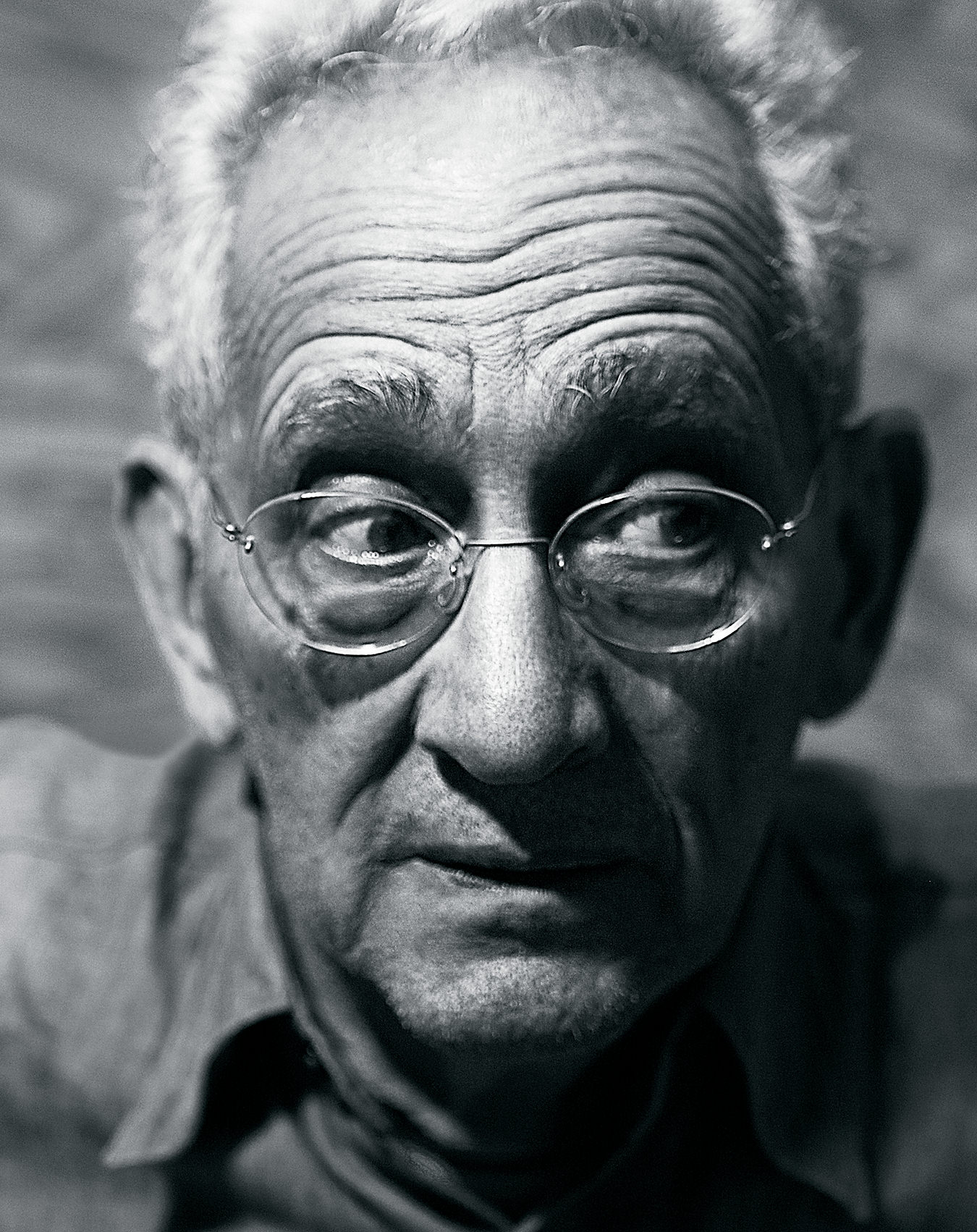British Artist Max Lamb Won’t Be Boxed In
The British designer and his cardboard creations.
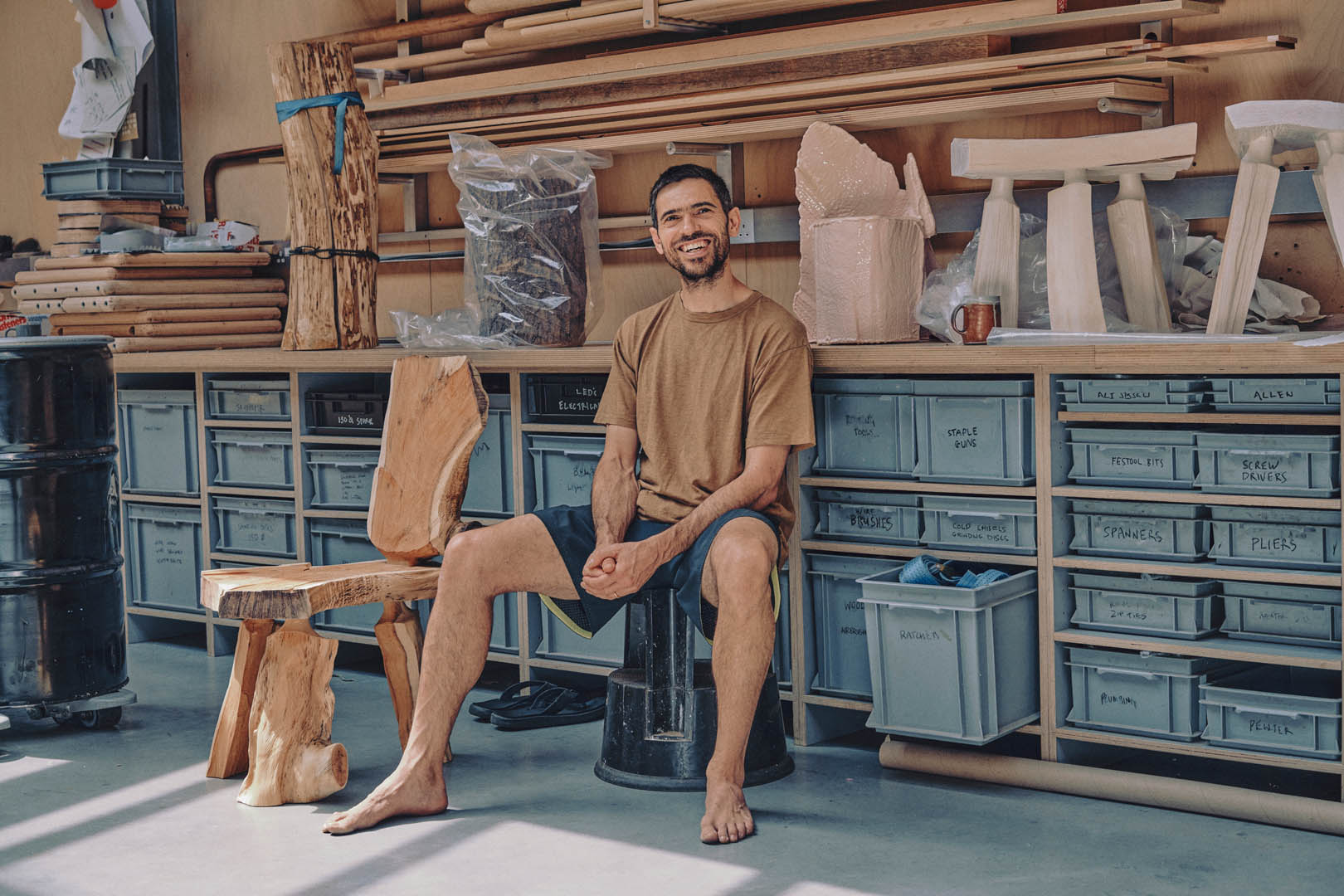
Photo by Tom Jamieson
The ability to mass-produce cardboard boxes was discovered by accident when Scottish-born printer Robert Gair was making seed bags in his Brooklyn factory and a ruler shifted, revealing that by creasing and cutting he could create folding cartons by machine. Today some 100 billion boxes are manufactured each year in the United States alone. With such vast quantities being produced, the omnipresent brown box is also a mainstay of garages, attics, and recycling centres, so in recent years designers and artists have looked for ways to reuse boxes, giving them life after they have shipped their goods.
Max Lamb has reimagined the cardboard box as a series of furniture pieces, attempting to elevate waste material into an object with its own intrinsic value for his new installation, the aptly named Box 2 is currently on show at FUMI LA until March 9, coinciding with Box 2 also on show at Frieze Los Angeles from February 29 to March 3.
The project is fundamentally linked to sustainability and reuse. Lamb notes: “Some of the cardboard boxes I have accumulated in my workshop over the last few years leant themselves to being reinterpreted as furniture by simply stacking or joining a small number together.”
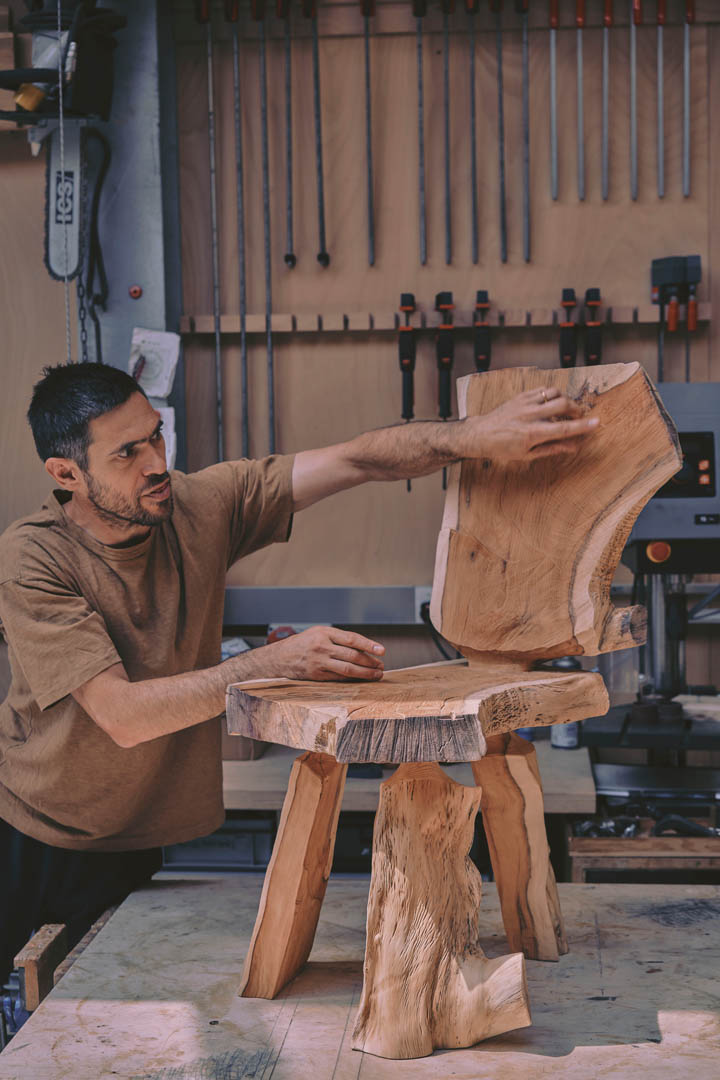
Photo by Tom Jamieson
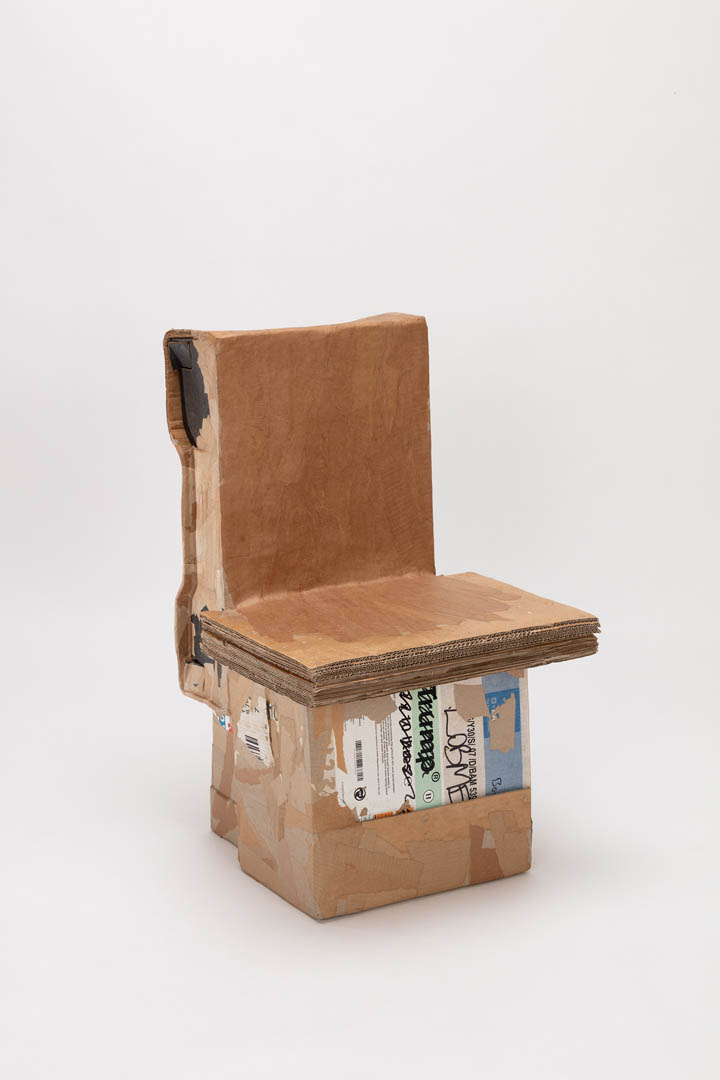
(3) BOX by Max Lamb, 2023 Unique, Signed, Carboard and Wheat Paste, Courtesy of Gallery FUMI
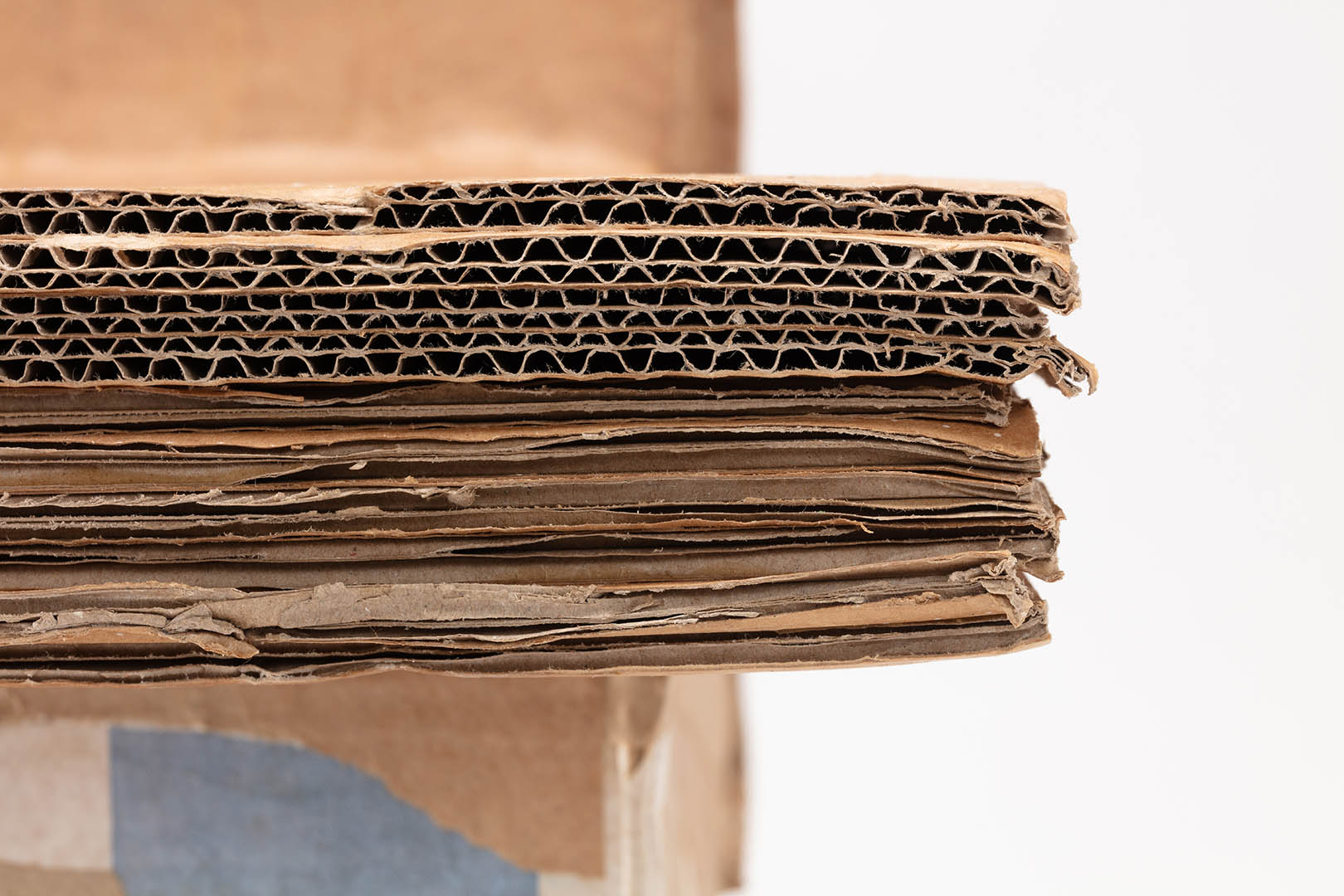
Detail of (3) BOX by Max Lamb, 2023, Unique, Signed, Carboard and Wheat Paste, Courtesy of Gallery FUMI

Photo by Tom Jamieson
Items in the collection, such as a low coffee table, retain the angular geometry associated with the boxes, and pieces of packing labels anchor them to the reality of their origin. For a project focused on sustainability, Lamb found an exemplary material: “Cardboard is 100 per cent natural and derived from plants—wood/plant fibres for the pulp and starch glue derived from tubers, seeds, and roots such as potatoes, wheat, rice, and tapioca.” This naturally guided philosophy runs through the project. For example, the glue used to bind the layers of cardboard together is nothing more than flour and water heated to form a paste.
Lamb harbours the dream that maybe his glue uses flour from the farm owned by his grandfather in northern England, which would be a fitting link from a project using the by-products of modern excess to the natural landscape of his home country.
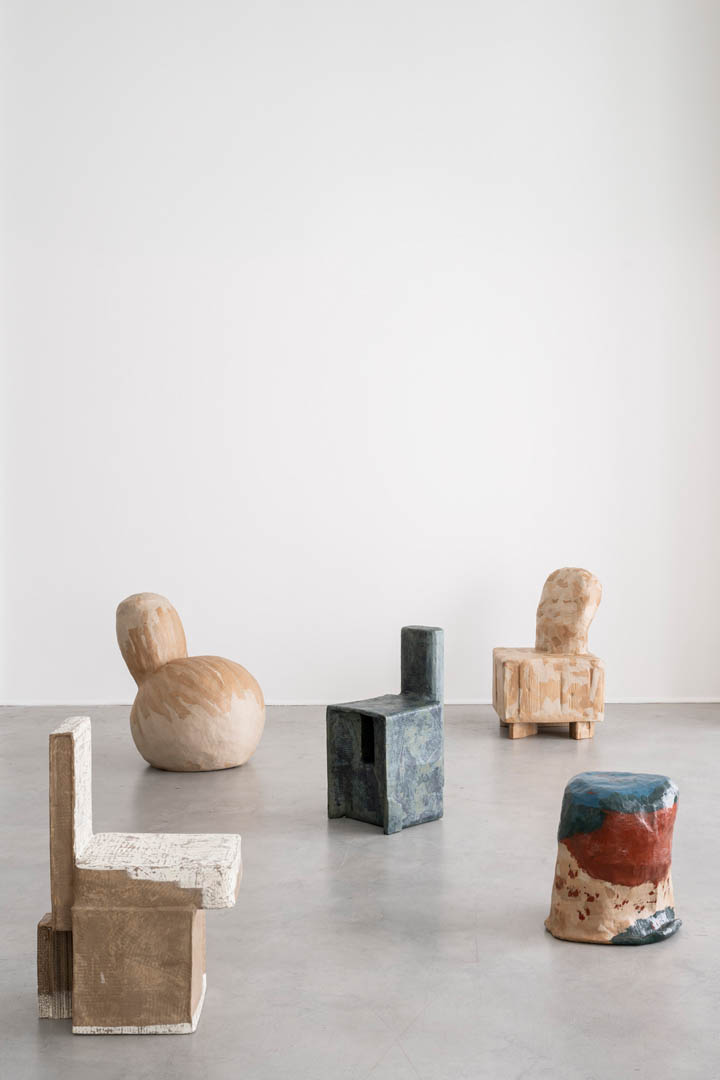
Solo show of BOX by Max Lamb, Gallery FUMI, London, October 2023, Photo by Thomas Joseph Wright PenguinsEgg Photo
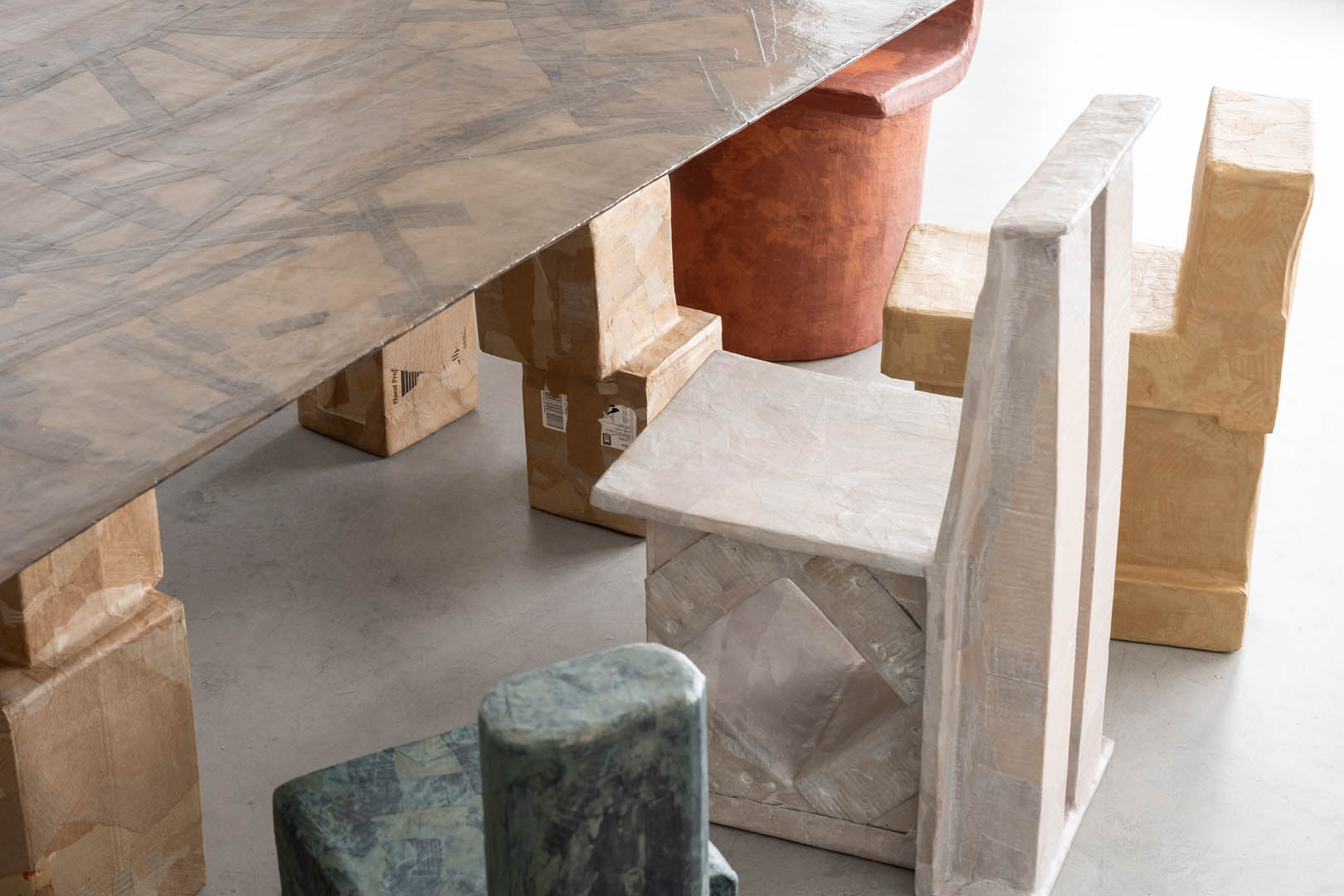
Solo show of BOX by Max Lamb, Gallery FUMI, London, October 2023, Photo by Thomas Joseph Wright PenguinsEgg Photo
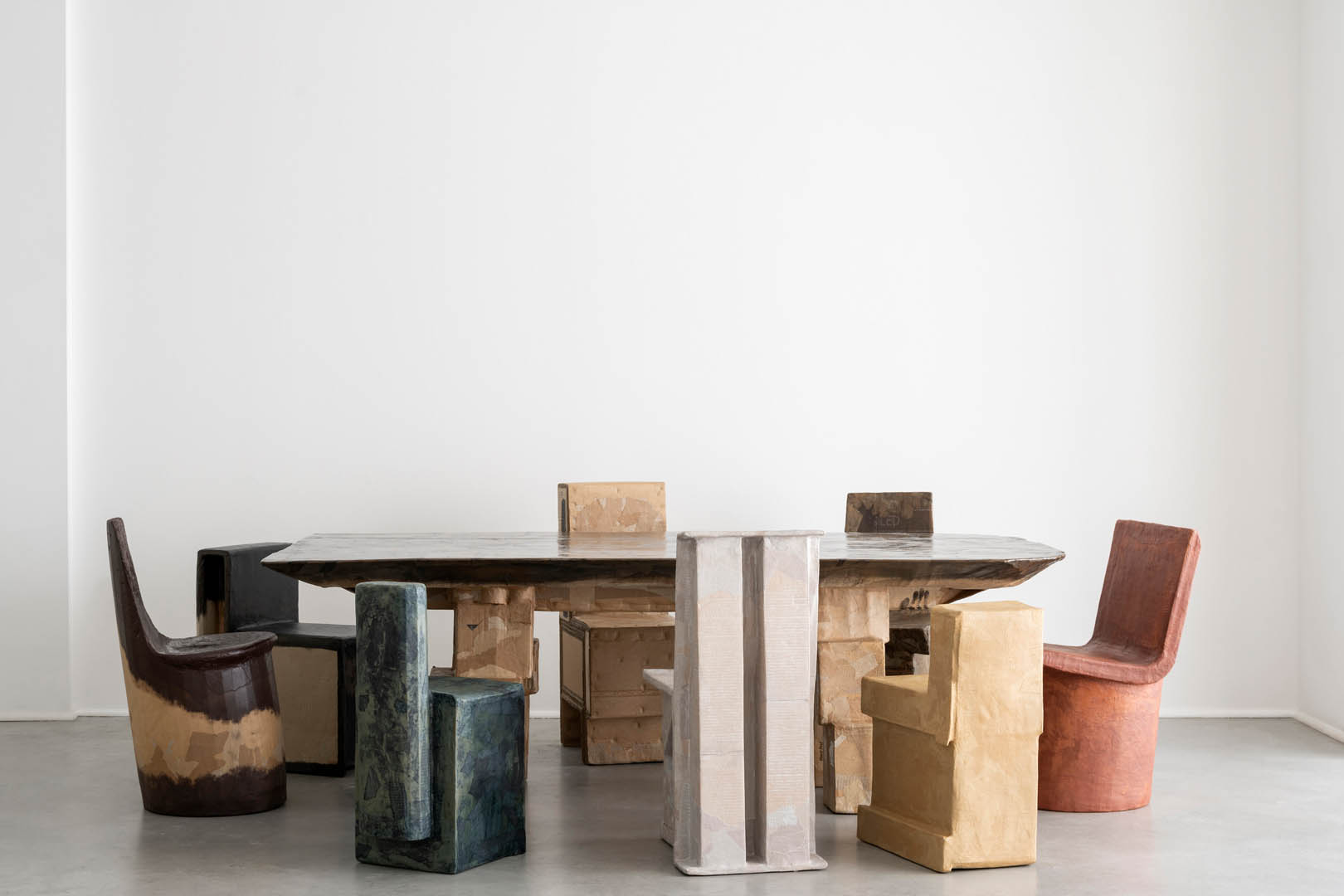
Solo show of BOX by Max Lamb, Gallery FUMI, London, October 2023, Photo by Thomas Joseph Wright PenguinsEgg Photo


